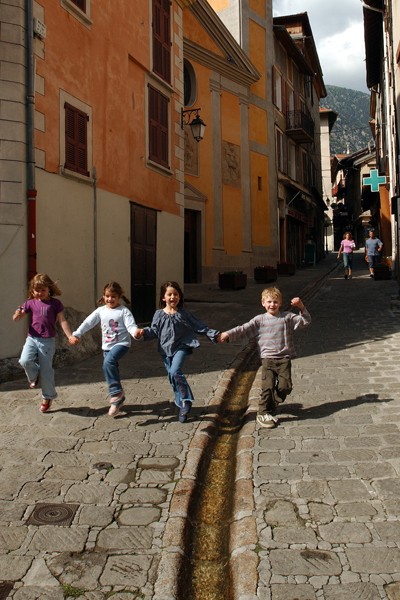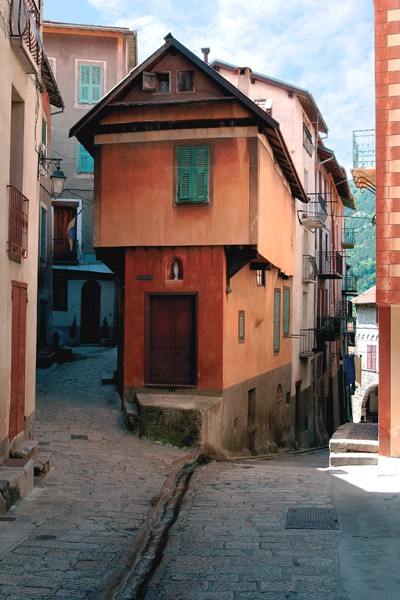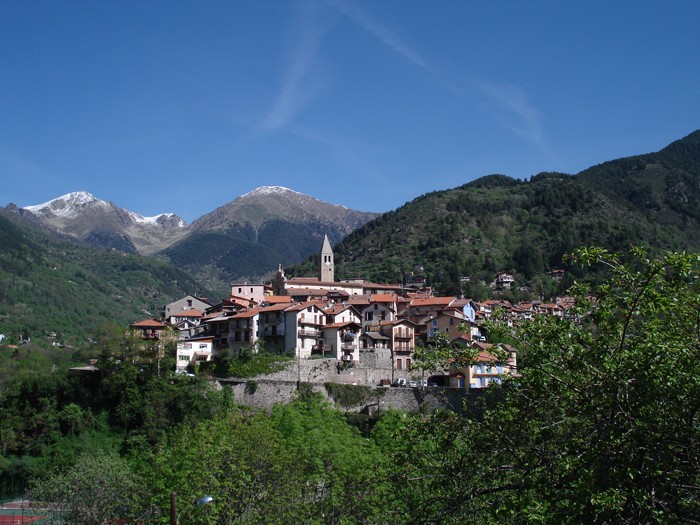Mountain Greenery

The hectic bustle of the Riviera seemed a million miles away as we enjoyed a large café crème on the Place du Marché in the center of Saint Martin Vésubie—a tranquil little town on a stunning hilltop just outside the Mercantour National Park, only about one hour’s drive from Nice.
Tired of battling with the masses—and the traffic—down on the Mediterranean coast, we decided to spend a week of our vacation in the Vésubie Valley, where temperatures are several degrees cooler and evenings call for a light sweater—a novelty after a hot summer on the Côte d’Azur.
Situated between two mountain ranges in Provence’s Alpes-Maritimes département, at an altitude of well over 3,000 feet and surrounded by acres of thick forest, the town of Saint Martin Vésubie looks a bit like a Swiss village, hence the valley’s nickname, “the Switzerland of Nice”. From almost any property in the village there’s a view of snow-capped mountains—with skiing and mountaineering just a stone’s throw away.
Throngs of skiers arrive from December to March to enjoy the slopes at La Colmiane, a resort with 21 runs just 15 minutes away, and the surrounding area is equally famous for mountaineering. Hikers can enjoy challenging walks that include the Rabon Pass, the peak of Clôt de Raut, the Tête du Villars, and the Baisse de Cangelard. They can also marvel at the views from some of the higher peaks, where on a clear day you can see as far as Corsica.

La Maison du Coiffeur in Saint Martin Vésubie © Mairie Saint Martin Vésubie, Alain Hanel et Maurice Ricci
Salt Stop
Saint Martin Vésubie itself is a thriving market town that is as busy in the summer months as it is in the winter. Many Niçoise families make the day trip to walk in the mountains, enjoy the luge d’été—a downhill toboggan ride—or simply breathe in the fresh, cool air. There is also a well-known wolf park, where 22 wolves live in their natural habitat. Saint Martin’s rich and colorful history dates back to the 13th century and possibly even earlier, and the houses that line the winding, cobbled streets have a distinctly Gothic air. Vestiges of the medieval ramparts remain, including the monumental Porte Sainte Anne, and a mountain spring—locally referred to as a gargouille (gurgle, or gargle)—runs through the village and its pedestrian streets, adding to the charm.
In the medieval era the region was part of Savoy, and it’s believed that the town was initially built around a priory founded by the Benedictine Abbey of Saint-Dalmas-de-Pedona in Piedmont. Saint Martin became a very important stop on the salt route between Nice and Piedmont, and it wasn’t until 1860 that it was annexed to France.
Property here is more reasonably priced than in many areas of the Alpes-Maritimes département, a major factor that attracts French buyers from all over the country looking for second homes, according to a spokesman for BM Immo, a real estate agency based in Saint Martin. The pristine countryside and the lifestyle are other major incentives, he adds. “We have customers from along the coast, from the Var to Menton,” he says, “and also from the four corners of France. We do also have some foreigners looking for property in the area, but not many.”
A large number of village houses have been divided up into apartments, many of which have balconies with wonderful views. Apartments can be found for as little as €70,000, but that will not buy you much space. There is currently a one-bedroom property on the market for €72,000—it’s small, but it does boast a 64-square-foot balcony with mountain views.

Saint Martin Vésubie © Mairie Saint Martin Vésubie, Alain Hanel et Maurice Ricci
Moving Up
Larger properties are more often found on the outskirts of town, frequently in the shape of Alpine-style chalets built in stone and wood. In general, older chalets are less expensive than more recently built properties. For example, there is currently a chalet on the market for €320,000; it has two separate living quarters on two floors, three bedrooms in total, and it comes with 10,700 square feet of land.
Less than a half-mile away is another chalet for sale at €550,000. This more expensive, all-wood property was built just two years ago, and is a paragon of luxury and sophistication—perhaps a sign of things to come in an area that has until now remained little known and unspoiled. The 2,150-square-foot property has five bedrooms, three bathrooms, a heated swimming pool, space for a 1,000-square-foot studio and a landscaped garden.
This elegant property is being handled by Cap Azur, an agency on the coast in Antibes, midway between Nice and Cannes. The Saint Martin area is very well known, despite its distance from Antibes, says a Cap Azur agent, and the prices are a lot lower than they are on the coast. A similar-sized property in Antibes could cost as much as €2 million—and that would be without a sea view, which would add another one million euros, at least.
“Unfortunately we don’t have that many houses for sale in Saint Martin Vésubie,” he adds, “because it’s a small place and properties don’t come up for sale as regularly as in larger towns. And we certainly don’t often have places like this—this one is very haut de gamme (top of the line).”
For those who like a challenge, there is still the possibility of buying an old bergerie (stone sheep barn) to renovate. But experts say there are only a limited number of original barns left, so prices aren’t cheap. “A lot of people are now after the genuine article,” says a spokesman for Solvimo, a real estate agency in Le Cannet, “and they don’t mind paying to get their own piece of the mountains. These are people who are looking for isolation, for one hundred percent peace and quiet.”
Real estate agency Sud Contact Haut Pays is currently marketing a property “for lovers of nature, and totally calm”. The authentic bergerie outside the village of Belvédère, about 20 minutes from Saint Martin Vésubie, comes with a water source and very little else, for €49,000. The stone shelter, which is set on 3.5 acres of land, can be converted into some 270 square feet of living space. The catch is that nothing can be built on the rest of the land.
Originally published in the September 2010 issue of France Today.
Share to: Facebook Twitter LinkedIn Email



